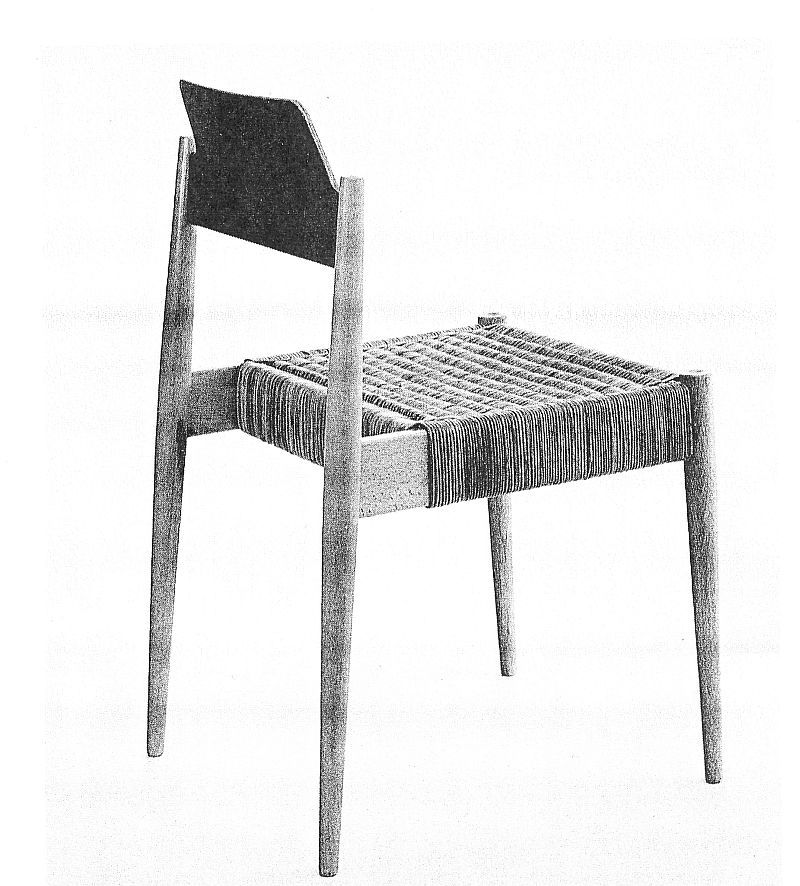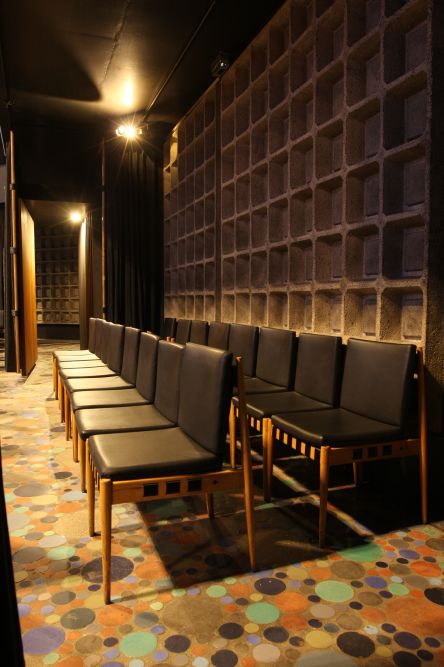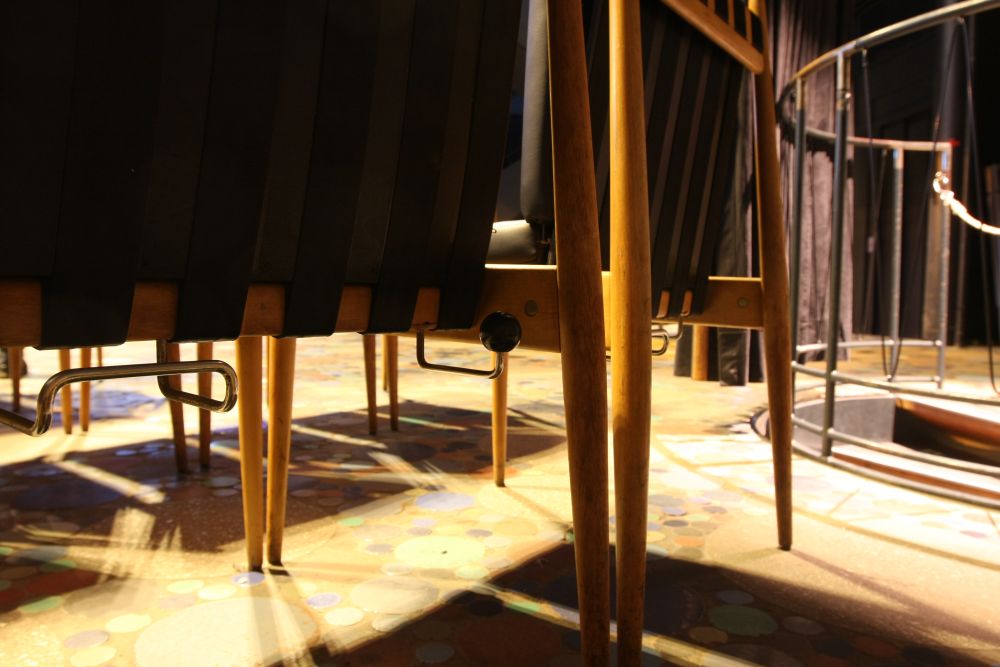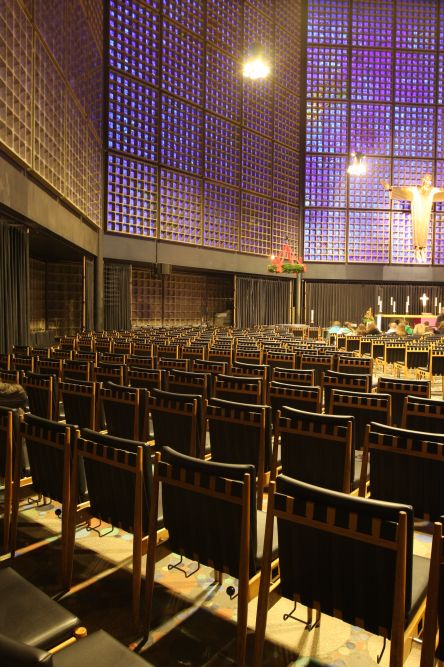On December 17th 1961 the New Kaiser Wilhelm Gedächtniskirche in Berlin was officially consecrated. Designed by Egon Eiermann the new church was and is a very self-confident, modern replacement for the Old Kaiser Wilhelm Gedächtniskirche; a building that to the regret of many Berlin residents fell victim to an allied bombing raid in 1943.
In keeping with all his projects up to that period Egon Eiermann didn't just create the building but also designed the furniture and fittings for the new church.
Fortunately for us the new chairs weren't actually in situ for the Consecration Service - and so our post can also be a little bit late.
The New Kaiser Wilhelm Gedächtniskirche was Eiermann's second church project - and just as he re-used and re-worked architectural elements from the Matthäuskirche, Pforzheim in the New Kaiser Wilhelm Gedächtniskirche so to did he carry over elements of the furniture design.......
Starting with the use of chairs rather than benches.

For the Matthäuskirche Eiermann created a simple, almost rustic, wood and wicker chair; and for Berlin Eiermann used the same basic form, albeit in new materials and with a new accent and attitude.
In many ways more urban. More sophisticated.
Keeping the same frame form, with the rear cross-support set slightly forward from the back legs, Eiermann replaced the wicker seat from Pforzheim with a belt supported structure. The most striking feature of the "Berlin chair" is the open construction that exposes the belts as they wrap around the frame; for us a clear nod towards the way wicker is attached to a frame, and thus a statement of the chairs lineage.

On the back Eiermann incorporated the two de rigueur features of church chairs - a place for hymn books. And a hat hook.
As we all know Egon Eiermann had, and still has, problems with people trying to compare his work with, inevitably earlier, pieces by Charles Eames. And so much as we like and approve of the small black ball hat holder - part of us can't help wishing that he'd chosen a solution that looked a little less like a Hang it All hook ...

What Eiermann sadly didn't carry over from Pforzheim to Berlin was the use of his famous table frame as the altar. However that decision is probably more related to the numerous differences of opinion that existed between Eiermann and the Berlin Diocese as regards the project rather than any deliberate decision on Eiermann's part.
In 1958 Wilde + Spieth released the "Pforzheim chair" as the SE 119 - according to Arthur Mehlstäubler the first chair Eiermann created for an architecture project that subsequently ended up in series production. And so for us a project that marks an important step in Eiermann's final move towards being a fully fledged "furniture architect" in the Danish sense. As the SE 119 the chair was used in the dining room of the German Pavilion at the World's Fair 1958 in Brussels.
And in 1962 Wilde + Spieth released the "Berlin chair" as the SE 121, and from 1964 it was used in the Chancery of the German Embassy in Washington. Without the hat hook and hymn book holder.
Sadly both chairs are no longer in production; however, the churches still stand and at both one can enjoy a delightful insight into a very specific part of Egon Eiermann's oeuvre.
